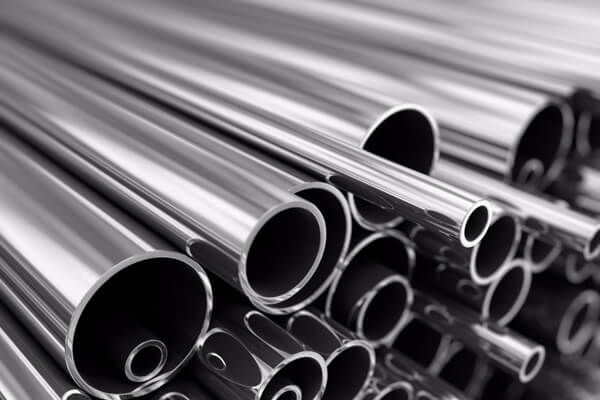Stainless steel is used in several applications, including food processing equipment, high-rise residential buildings, shipbuilding, marine construction, and high-rise residential buildings. Its corrosion-resistant properties make it a practical alternative to other metals. Additionally, steel pipes are inexpensive and can survive prolonged periods of constant exposure to the elements. To learn more about this versatile material, keep reading. After all, it is helpful in more places than you might think.
Stainless steel is a family of numerically-graded steel best known for its corrosion-resistant properties. Its strength and durability come from the addition of chromium, which oxidizes the steel surface, providing two hundred times more corrosion resistance than ordinary steel. Stainless steel is a durable and cost-effective material for fabrication and food processing equipment, as it has a high resistance to rust and corrosion. Look for the stainless steel pipe price in South Africa before deciding on anything.
Stainless steel is used in food processing equipment.
Stainless steel is the most common material used in food processing equipment. This is primarily due to its hygienic properties. The association publishes consensus opinions on food safety, sanitation, and product cleanliness. SSI publications are required by regulations.
High-rise residential buildings
Stainless steel is the material of choice for many applications, including high-rise residential buildings. Its non-toxic properties and corrosion resistance make it the material of choice for such a project. Furthermore, stainless steel is non-toxic and emits no fumes or toxic gases. This material also is very durable and easy to clean. In addition to high-rise residential buildings, it is also used extensively to install drainage and water supply systems. It is easy to clean and does not harbor bacteria, making it an excellent choice for these projects.
In addition to the benefits of durable material, stainless steel is aesthetically pleasing. Its low cost and high recycled content make it an excellent choice for multifamily housing. Moreover, it meets strict hygiene and cleaning requirements. Stainless steel drainage systems are preferred for buildings where maintenance is impractical or impossible. Another environment where stainless steel drainage systems are used is prisons. Likewise, a durable drain system is required for industrial facilities like hospitals, prisons, and commercial kitchens.
Shipbuilding
Seawater is a vital medium for heat exchange. Stainless steel pipes have a variety of applications in the marine industry. Pipes used in these applications must possess high mechanical and technological properties and be corrosion-resistant. Currently, most of these pipes are made from rolled steel and feature high yield strength and large specifications. The following are some of the most common uses of stainless steel in the marine industry.
The performance of super ferrite stainless steel pipe makes it a superior choice in many applications. It is used in shipbuilding, automobile manufacturing, and desalination. It has excellent corrosion resistance, making it a good choice for the marine industry. It is also used for heat exchange equipment in petrochemical plants. This material is suited for marine environments because of its high chloride ion content. Other uses of stainless-steel pipes include electronics, metallurgy, and textiles.
Marine construction
Stainless steel pipes have a multitude of uses in marine construction. For instance, W and H sections are vital beam elements, and steel pipes are easy to drive, durable, and low-weight per unit length. Many marine construction projects require steel sheet piles and clusters of pipes driven into the seabed. Dolphin piles are used as an independent mooring point for ships or as a structure aligned with jetties and other structures. Steel pipe dolphins are commonly made of coated carbon steel.
Extrusion
Stainless steel seamless pipe is made by the extrusion method. This method is also known as continuous casting blank. Its advantages include flexible variety and stable product quality. The pipes are produced at high temperatures in various shapes and sizes. However, it has some disadvantages, such as a low finished product rate. Foreign manufacturers have developed their production processes to overcome this issue. In particular, the high-end varieties of stainless-steel pipes need pre-drilling, hydraulic punching, and extrusion.
Welding
The most common process for welding stainless steel pipes is TIG welding. This process requires a hot pass and a root pass to create a fluid weld and penetrates the steel. However, there are certain situations where you can complete the weld without back purging, and in these cases, you will need to use a different method. You can also use nitrogen or hydrogen, which have similar effects but are more aggressive. The flow rates of these gases depend on the machine and source. Hydrogen should not be used in ferritic, duplex, or martensitic grades.
When welding stainless steel pipes, you must take special care to avoid causing any damage to the material. If you do not do it properly, the steel will rust and fail. To avoid this problem, you should check the welding procedure before starting the project. If you are not sure how to weld stainless steel pipes, consult a professional. You can obtain helpful information by reading this patent application.
Final Take
Stainless steel pipes are perfect for any application that requires long-lasting durability and flexibility. They can be used in the kitchen, bathroom, or anywhere else you need something durable!











Leave a Reply